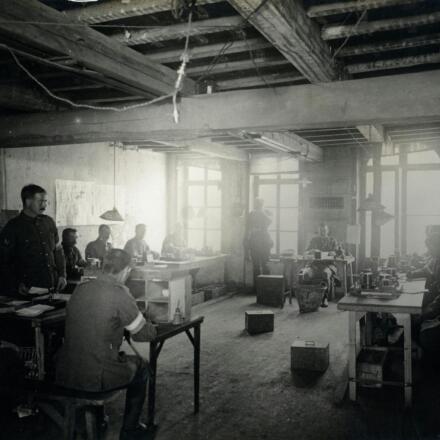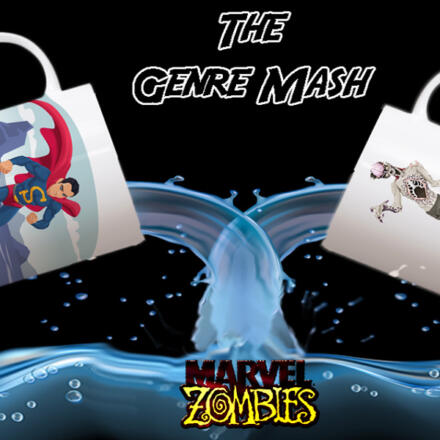
This article is a companion piece to the earlier article 100 Dungeon Descriptors Table. Just like that article, it’s a d100 list you can roll on for random descriptors. This time it’s for overland areas. Roll a few and see if it inspires you, or roll a few for an overall area and more for sub-areas.
Here’s an example: Rolling 5d100, we take the first two results for the entire area, then the next three for extra traits for smaller sub areas. Results are 16, 56, 10, 37, 96. Air: Cutting, Resources: Land/Water, Earth: Rocky, Dead:Ruined, Wealth: Traders
- We have an overall area with rich farming soil and good fishing waters but plagued with cutting winds. This means that large plots of cropland are out. Inhabitants probably try to build shelters in the lee of rock outcroppings and tree breaks and grow small plots of crops either behind wind breaks or in greenhouses. Livestock are probably common but closely tended and brought into shelter to avoid storms. This implies a fairly sparse population since the level of farming necessary to feed a dense population would be very difficult despite the fertile soil. Uncommonly used creatures that would be right at home in this area are air elemental creatures as well as burrowing monsters.
- We’ll say that there is an area with the same fertile soil but rocky and very hard to till and littered with large boulders and rocky outcroppings. This area houses a medium sized city with walls strung between large rocks and outcroppings, which owns large herds of grazing animals that they bring in the city when storms rise. However the area is also home to many bandits and dangerous creatures that also take shelter in the stones. At least there are relatively few burrowers waiting to pop up beneath your feet.
- Next is an area dotted with ruins. For some variety, we’ll place this area in a forest of large solid trees with wind blasted outer bark and needle leaves (none of our rolls say anything about local flora, so why not?). Interspersed among the trees are many tumbledown ruins, some largely intact. The winds are stronger and more frequent here and accompanied by a fearsome howling and may originate somewhere in these ominous structures. Strange skulking creatures with tough hide and tiny almost vestigial eyes and ears roam the forest. How they hunt with such deadly efficiency is a mystery.
- Finally we have another medium city. This one is located in the lee of a huge rock outcropping and surrounded on the other sides by a wooden palisade. It sits on one of the area’s major waterways. It has a small fishing fleet but is mostly a giant walled bazaar. It’s fleet of shabby merchant houseboats ply the area’s rivers visiting homesteads and trading odds and ends and resupplying the locals.
Note: Dave Woodrum of Fishwife Games was inspired by this example and made me a the matching map, seen above! We’ve featured some of his cool gaming products on Gnome Stew previously.Â
- Water: Swampy – swamp, marsh, bog or any very wet land
- Water: Lakes – a land studded with multiple lakes of various sizes
- Water: Islands – mostly water with lots of islands
- Water: Rivers – an area criss-crossed with many rivers large and small
- Fire: Burning – affected by regular wildfires and uncontrolled burns
- Fire: Ash – an area that has burned to the ground and never recovered
- Fire: Volcanoes – volcanoes or other geothermal activity
- Fire: Lava Flows – has open flows of lava and similar hazards
- Earth: Gravity defying – impossibly high or overcropping cliffs and mountains
- Earth: Rocky – rocky soil, littered with large boulders
- Earth: Broken – split and broken ground with chasm and ravines
- Earth: Living – populated with earthen creatures or living rock
- Air: Noisy – constant whistling winds
- Air: Floating – features floating rocks, plants, buildings or whatever else you like
- Air: Flying – inhabited by a large number and variety of flying creatures
- Air: Cutting – dangerous gale force winds that can injure those caught in them
- Forest: Light – young trees
- Forest: Heavy – heavy forest
- Forest: Dense – ancient dense or massive forests
- Forest: Brush – scrub trees with underbrush
- Inhabitants: Magical – elementals, undead, constructs and other unnatural things
- Inhabitants: Humanoids – primitive or advanced humanoid tool users
- Inhabitants: Animals – area is populated with animals, predators, scavengers etc…
- Inhabitants: Lowlives – slimes, fungus monsters and insects
- Elevation: Lowlands – ravines, gorges, basins and the like
- Elevation: Flat – largely flat and featureless
- Elevation: Medium – hills and slopes
- Elevation: High – mountains, buttes, etc…
- Weather: Constant – always a light precipitation falling
- Weather: Heavy – more precipitation than usual and/or heavier than normal
- Weather: Erratic – likely to change quickly and a wide variety of weather
- Weather: Extreme – probably usually heavy but with a much more intense season that can be dangerous
- Live: Verdant – extremely green and covered with vegetation of all sorts
- Live: Genius Loci – a spirit inhabits the land and can manipulate it to a limited degree
- Live: Carnivorous – large plants or even the land itself is predatory
- Live: Growth – plants grow quickly to larger than usual size
- Dead: Ruined – scattered with ruined and partially destroyed buildings
- Dead: Haunted – spirits, ghosts or just strange feelings haunt the area
- Dead: Decaying – plants and soil don’t last long and actively decay
- Dead: Ancient – similar to ruined but far fewer and far older ruins
- Hot: Desert – covered in sand and blistering heat
- Hot: Tropical – full of vegetation and wet but unbearably hot
- Hot: Veldt – dry grassland with burning overhead sun
- Hot: Bare – dry cracked earth
- Cold: Snowy – covered in a layer of snow, snows often
- Cold: Iced – freezing rain coats everything in a layer of ice
- Cold: Spires – ice makes strange flowers and spires
- Cold: Frigid – cold with cutting dangerous winds
- Development: Frontier – isolated fortresses with small populations
- Development: Secret – hidden settlements, isolated farmsteads etc…
- Development: Points – points of light in largely unsettled wilderness
- Development: Dense – highly populated settled lands
- Resources: Wildlife – game and fur animals are abundant
- Resources: Ore – lots of valuable metal and gems
- Resources: Materials – wood, stone etc…
- Resources: Land/Water – arable land, fishing, water access
- Vegetation: Grassland – rolling grasslands with only grass scrub and isolated trees
- Vegetation: Ancient – strange old plants uncommon elsewhere
- Vegetation: Fungal – mushrooms and other fungus
- Vegetation: Overgrowth – thick underbrush and tangling weeds
- Government: Balkanized – many small countries or city states in tense relations
- Government: Democracy – government by a representative body
- Government: Oligarchy – government by a council or small group
- Government: Monarchy – a single ruling figure
- Architecture: Simple – uncomplicated unpretentious buildings
- Architecture: Efficient – larger and more complicated building style with little ornamentation
- Architecture: Ornate – lots of decorative details and shapes
- Architecture: Unusual – strange or unusual building materials, shapes or styles
- Relations: Warlike – inhabitants are threatening or war on their neigbors
- Relations: Traders – trade with neighbors
- Relations: Diplomats – peacemakers and diplomats
- Relations: Isolationists – keep to themselves, possible xenophobic
- History: War – area or people once involved in a significant war or conflict
- History: Diversity – due to historical events, area is host to a large diversity of people
- History: Religion – hosted significant religious events or personages in the past
- History: Events – other significant historical events happened in this area
- Production: Agriculture – makes food and ag products
- Production: Materials – exports raw materials
- Production: Manufacturing – produces crafted and finished goods
- Production: Art – exporter of art objects
- Technology: Primitive – stone or bronze age technology
- Technology: Iron – low fantasy iron age
- Technology: Advanced – high fantasy renaissance
- Technology: Steam – steam tech
- Food: Hunt/Gather – sustains population with hunting/gathering
- Food: Livestock – primarily raises livestock
- Food: Crops – crop farms for most food
- Food: Advanced – uses advanced ag technology like aqueduct irrigation, crop rotation etc…
- Learning: Religion – region has learned religious experts
- Learning: Crafting – region has master craftsmen of note
- Learning: Scholars – region has many secular scholars
- Learning: Education – unlike most areas, the common inhabitants are mostly literate and have a basic education
- Wealth: Poor – inhabitants are very poor
- Wealth: Wealthy – inhabitants are wealthy
- Wealth: Non-standard – the wealth of the area is in unconventional goods or coinage
- Wealth: Traders – inhabitants mostly operate via barter or trade
- Magic: People – most people either know a few magic tricks or have very minor magic items
- Magic: Creatures – creatures are strange and magic touched
- Magic: Landscape – landscape has odd magic features
- Magic: Effects – odd effects can be found here, fountains, auras etc…

















Thanks for the opportunity for me to do the map and for the mention!
Thanks for offering! It’s nice to have a visual to go with the text.
Awesome map. What was used to create it? Hexographer?
Believe it or not…Paint (and the old Windows XP version at that). I primarily used Paint and a collection of self made hex images that I’ve added to on and off over the years. Saved it as a bit map and then loaded it up in a hideously old copy of Ulead Photo Impact (like over 20 years old) so I could drop it over a natural texture background, giving it that weathered look in places (where the color is intentionally off here and there). Yes, you can make maps with basic software and outdated technology on a dime. 😉